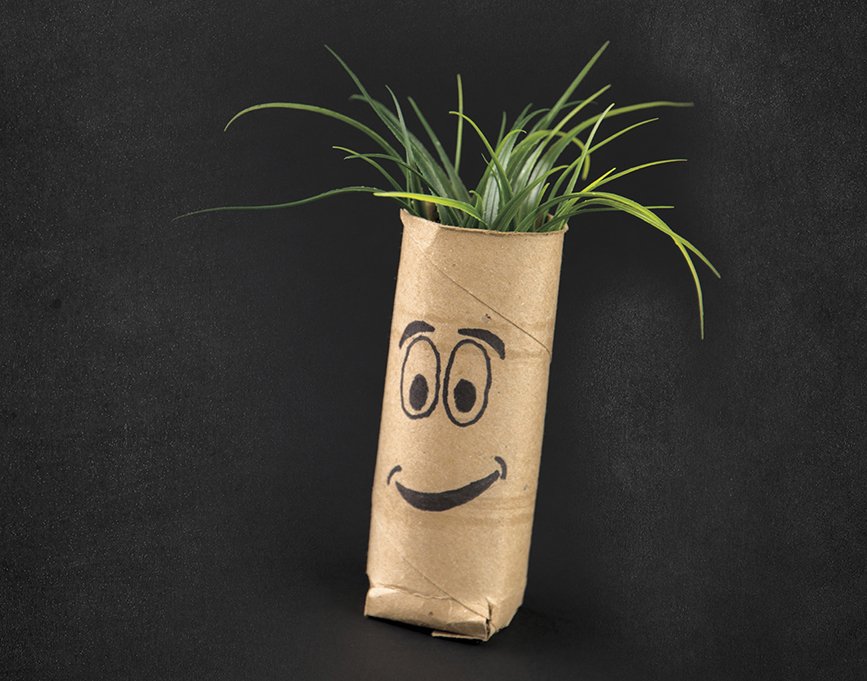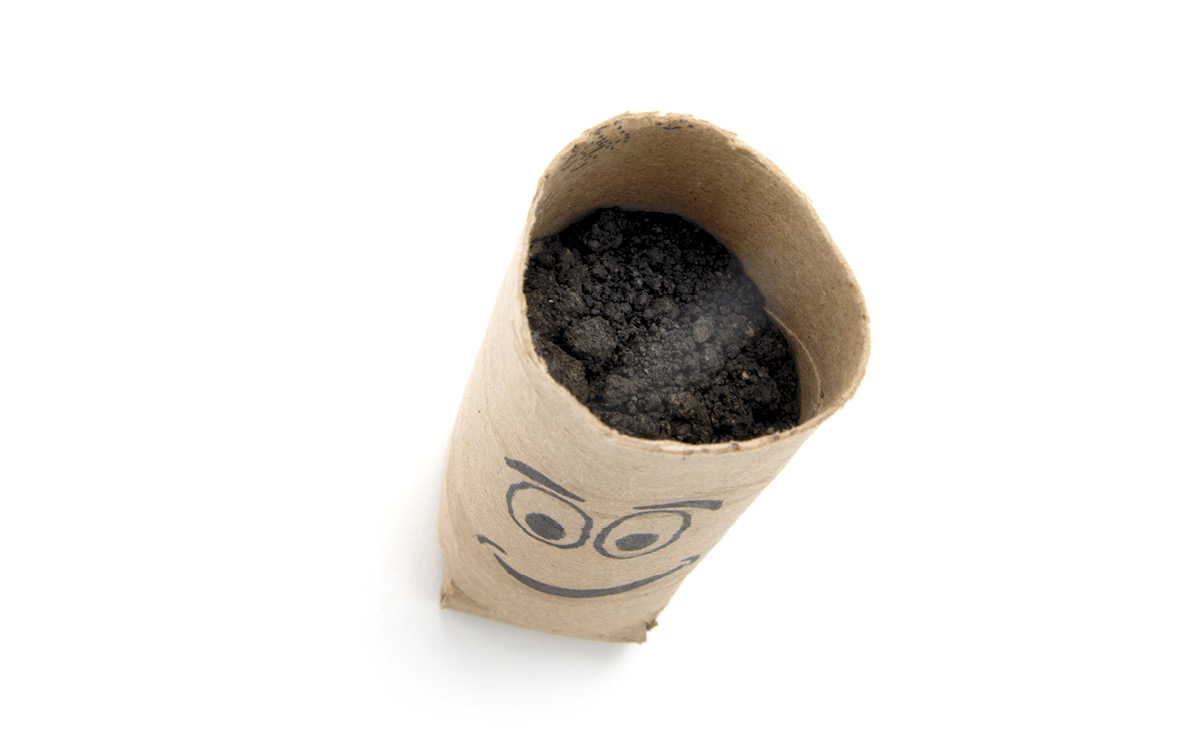Branch of Science: Biology
Concept: Seeds and Sprouts
PLANTABLE PLANTER

Inside a tiny grass seed is a plant embryo and a store of food to help it grow. When the seed is soaked in water, that’s the new plant’s cue to press its way out and sprout. Use a short tube to create a cute container for your sprouting seeds, and then plant them—tube and all—in your yard.
You’ll Need:
- Ruler
- Short tube
- Scissors
- Felt-tipped pens
- 3/4 cup (177 grams) of potting soil
- 1 teaspoon of grass seed
- Water
Put It Together:
- Draw four 1-inch (2.5-cm) lines at equal distances around one end of your tube. Cut along each line to make four small flaps.
- Fold the flaps so that each flap overlaps the one before it. Tuck one side of the last flap under the first flap. Press the flaps tightly to make a flat bottom for your planter.

- Using the felt-tipped pens, draw a face on the planter.
- Fill the planter 3/4 full of potting soil. Spread the seeds on top of the soil. Add a thin layer of soil to cover the seeds.

- Water the seeds, but be careful not to add so much water that the roll is drenched.
- Place your planter in a warm place. Keep the soil moist but not soaked. Your seeds should sprout hair in 5 to 14 days.
- Plant your sprouts, tube and all, in a bald spot in your lawn.
Tip: Set your planter on a plate to catch any dirty water that might leak from the bottom.